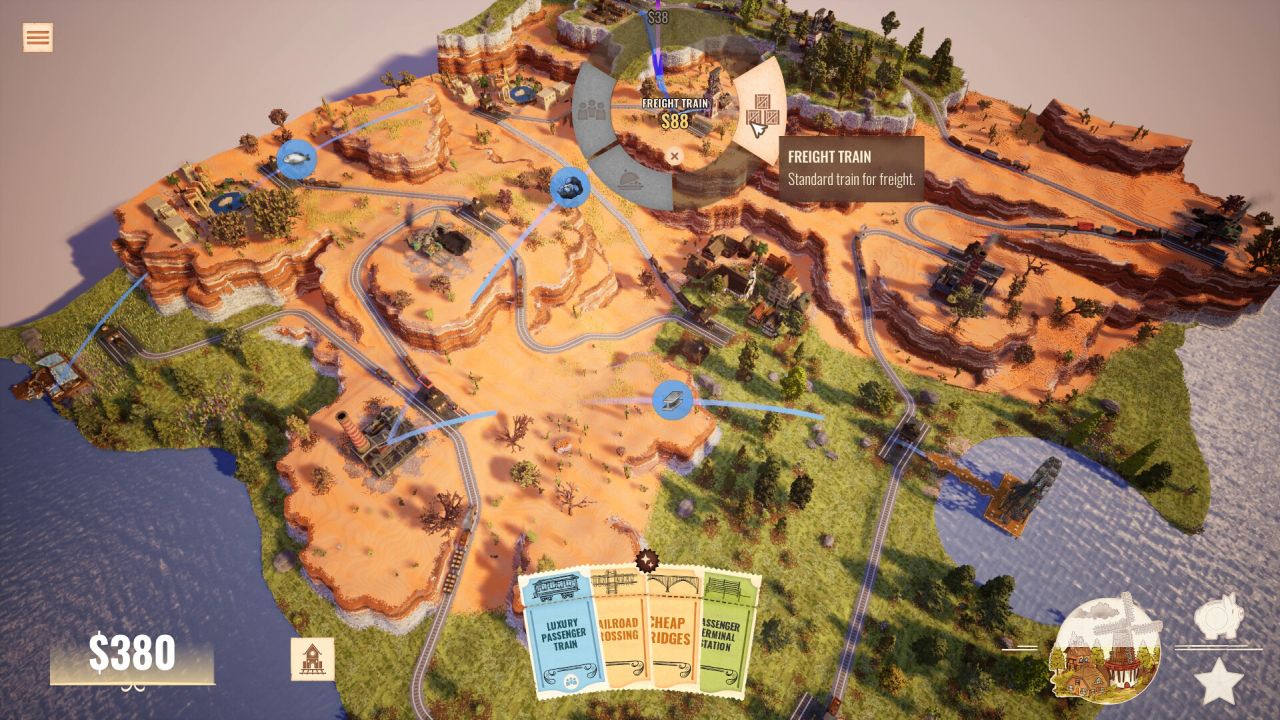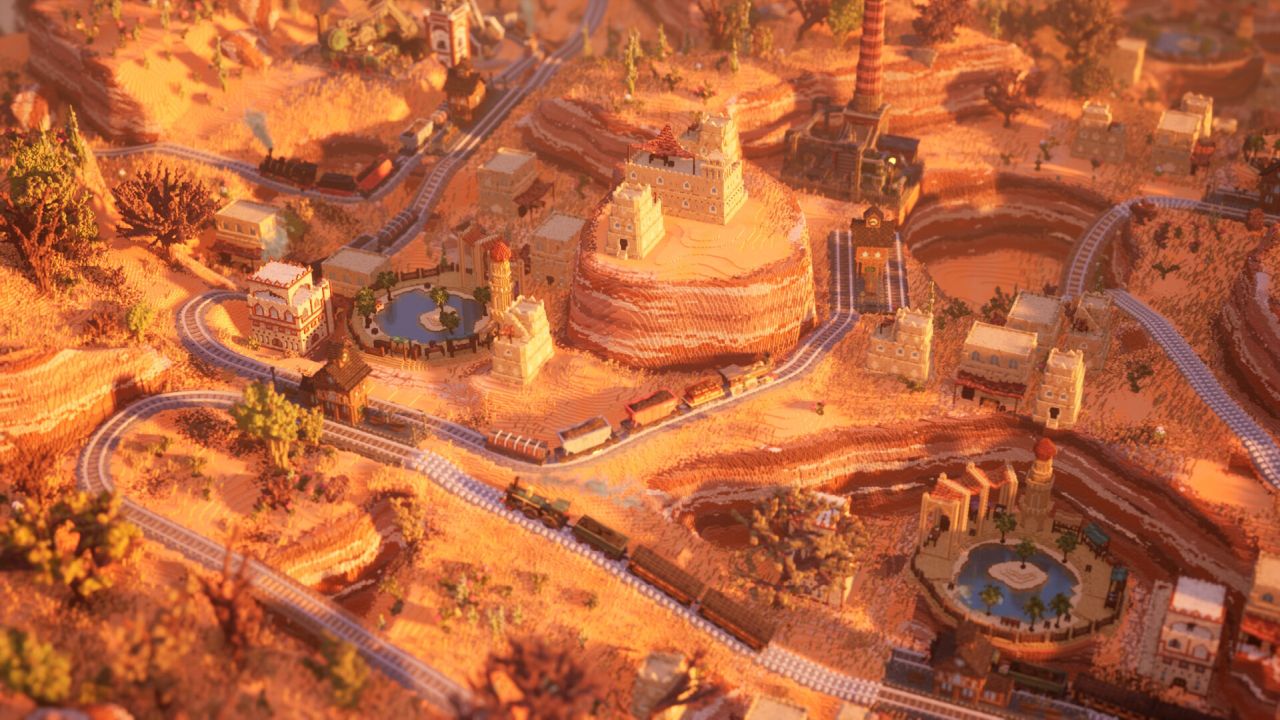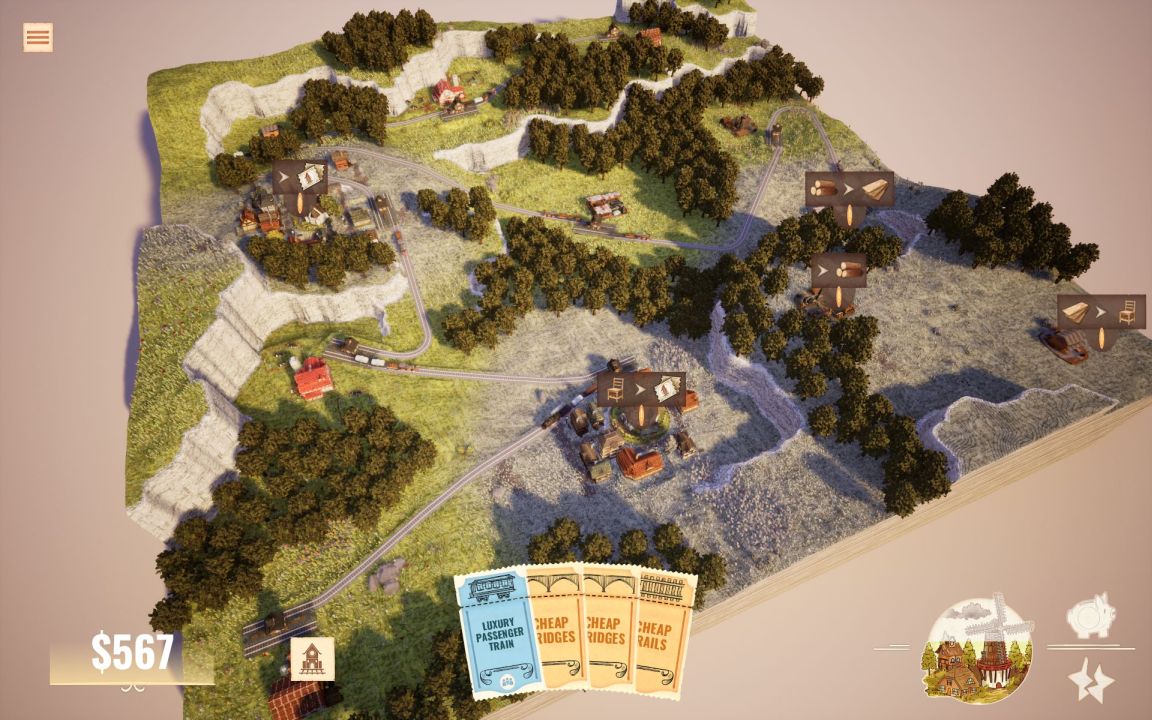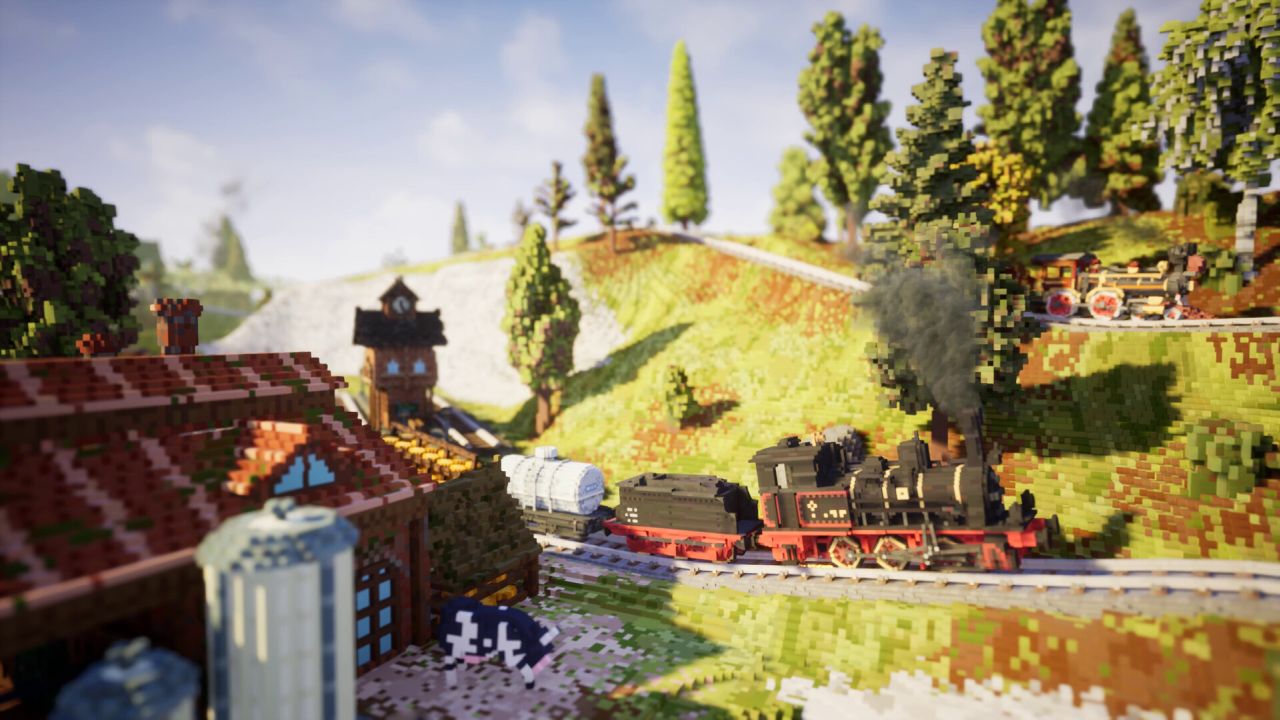Station to Station Review
Puzzle games come in a variety of formats – some ask you to plan ahead, while others present you with a full set of elements and let you figure it out at your own pace. The recently released 3D puzzle game Station to Station is a sort of combination – it lets players interconnect buildings on a series of maps, but within each map it constantly introduces new endpoints that can affect your planning. These dynamic elements can lead to both triumph and frustration, but for the most part the title keeps you thinking and entertained, which is what most puzzle games should aspire to do.

The campaign design follows familiar trappings for a modern light puzzle game. There are six chapters, each focusing on a different biome and challenge set, containing around 5 or so individual levels. Level to level progress is linear, though later chapters let you progress in more than one direction. Similarly, new chapters are unlocked from earning enough stars, and at the mid-point you should have a couple of chapters to choose from. Still, it’s a largely linear progress curve, and it probably works best in that way, given that the mechanics and difficulty evolve gradually over time.
The levels themselves are presented as the typical abstract plots of land you’d find in many puzzle games, upon which the game generates the terrain and buildings you will need to be connecting. The game spawns a few buildings which players need to connect in order to transport goods. You click to place a station anywhere within the small radius of a building, and can rotate it freely. The stations come with 4 rail ends, so you can plan ahead which direction to face in order to reduce future rail line costs. Once you have two stations placed, you click to and drag a rail line between them. Once connected, the goods will automatically transfer instantly, and you may get a cash bonus to use for the next rail track. All of this happens automatically – this isn’t a management or strategy game of any kind. Your cash is set and only changes when you progress through the level by connecting buildings and spending it on more construction; it doesn’t flow over time. You’ll observe the trains rolling along, but they are just visual décor.
While the game will be able to create a direct path between stations automatically over any terrain, one of the core aspects is to carefully route the rails around obstacles in order to reduce costs, as otherwise you will run out of money and be unable to complete the level. Players can click on the terrain manually in order to lay down rail tracks in sections, creating a curated path that uses the natural slopes and avoids the need for bridges or rail crossings, thus reducing the price. It may be a longer path, but it’s more cost effective. Later levels also introduce elements such as forests that also cost money to remove and run a rail line through.

The other major mechanic is the card system. Over the course of a level, the game awards one-time cards to use. These cards have an effect on your next rail track – whether it’s reducing the cost of the basic rails, reducing the cost of bridges, or letting you run special trains on that section which increase your income bonus. Using these bonuses becomes quite pivotal later in the campaign, as otherwise it’s easy to run out of cash before all the buildings on the map have been connected and the level completed. The initial half of the campaign is fun and intuitive as you click and place rail track lines, connect stations, and watch the trains begin to roll; it’s not particularly tough and beating the levels does not take too long.
But things get more complicated later on, due to a few mechanics. Each level starts you off with only a handful of buildings that need connecting together – those buildings are either industrial or a city. The industries range from furniture and tool making to cheese and fish production. Some buildings produce a raw material, while others consume it to create something new. Thankfully, you don’t need to interconnect each building to the rest in a mesh; simply creating a rail that chains them along is enough for the goods to move. However, even if you have a large rail network, the materials are used by the first building in the path; later levels have many different building locations that need interconnecting to the far corners of the map. So you have to decide if you’re creating a large all-encompassing rail path, which becomes near impossible without placing additional stations with its 4 rails at the same building, or creating standalone rail networks for each section of the level terrain.
By connecting production buildings and cities that consume raw materials last, you get the biggest cash bonus. So you’ve got to worry not only about your rail paths, but also the order in which you connect the stations into your growing rail network. Getting these stack bonuses can mean the difference between completing the level and maybe getting the bonus objective, so it is quite key to progression. Another bit of the puzzle that complicates things is the second type of rail – passenger transport. These rail lines must be directly connected between cities, and can only transport passengers (though you do get a card later that lets you use a mixed-type train for both people and goods) .

Station to Station has a solid foundation, but the game certainly keeps increasing in complexity and adding elements that ruin your planning. For one thing, as you connect the initial buildings, the game gradually adds new ones to the map. In doing so, it can make you realize that you’ve done your initial rail design incorrectly, as the newly spawned buildings are now too isolated or too costly to bring into the network. While yes, you can see spawn points where new structures are going to be spawned later in the level, you can still end up in situations where you’re not able to complete the level because you are out of money and the rails that need laying are too costly for your remaining budget. Further, later in the game you even get to choose which buildings get spawned in predetermined locations, through the card system, giving you even more to think about in how you want to transport your goods across the map. This means you have to restart from a checkpoint, or restart the whole level altogether, as there is no option to demolish or undo anything (except for stations that aren’t yet connected by rail). This leads the game to feel more like trial and error than perhaps it should.
If you persevere, there are typical optional objectives to chase, such as having a certain amount of cash remaining at the end of a level, using no bridges, or not removing any forests. The challenge stars simply help unlock the later levels of the campaign quicker. If things get a bit annoying in the second half of the game as you restart levels after realizing what buildings spawn in the latter portions, you are able to switch to a casual no-cash mode, which lets you complete the level even if you are out of money. And if you’d like to keep playing after the campaign, there is even a nice randomly generated map mode where you can select the biome type, industry type, difficulty, and just lay down rail tracks to your heart’s content.
The title has a nice and clean visual look to it, and uses a Minecraft-like voxel design. You can zoom in and see the stations, production buildings, and cities with their blocky and colorful visual style, as they hum along and have a few idle animations. There is some fog that can roll in, and it makes the terrain look quite peaceful as the trains slowly roll along the tracks, and the camera enables some depth of field effects. However, much of this art style and atmosphere is never seen, as the actual gameplay takes place at a high point of view above the level. It’s only when you zoom in that the visuals can be appreciated – but there is sadly no gameplay reason to do so.

The UI is clean and typical for a puzzle game, as is the serene and enjoyable background music. The levels start off in grey, but as you complete sections and connections, begin to gain color, which is a decent effect. The buildings on the terrain can be tough to spot, so pressing Tab reveals their location as well as production goods, helping with the planning. The various biomes are decent, from rolling hills to steep cliffs, though they mostly affect the gameplay rather than the visual feel.
Station to Station is an engaging path optimization puzzle game, with a number of different mechanics that keep players engaged throughout. Even within the same levels, new buildings appear and force players to adjust their strategy or restart the level and try to think ahead. If you just want to peacefully place railways that are aesthetically pleasing, you can do so by turning off the cash (thus removing the puzzle aspect and making it a free-build game without much purpose). But if you want to complete the levels and their objectives, you’ll certainly be forced to pick function and cost savings over form. Fans of puzzle games looking for something a little different should have a good time with Station to Station.
